Complete Solutions to Exercises Linked Compreshension of chapter AROMATIC COMPOUNDS AND ALKYL AND ARYL HALIDES of Class 12 book with complete answers and questions
| Class 12 | CHEMISTRY |
| Chapter | AROMATIC COMPOUNDS AND ALKYL AND ARYL HALIDES |
| CENGAGE CHEMISTRY | Exercises Linked Compreshension |
| Number Of Questions | 58 |
| Academic Year | 2023-24 |
This section contains `11` pragraphs, Based on each paragraph, four to nine mutilple choice questions have to be answered. Each question has four mutiple chaoices questions have to be answered. Each question has four mutiple choices `(a), (b),(c)` and `(d)` out of which only one is correct or wrong.
Paragraph for Problems `1-8`
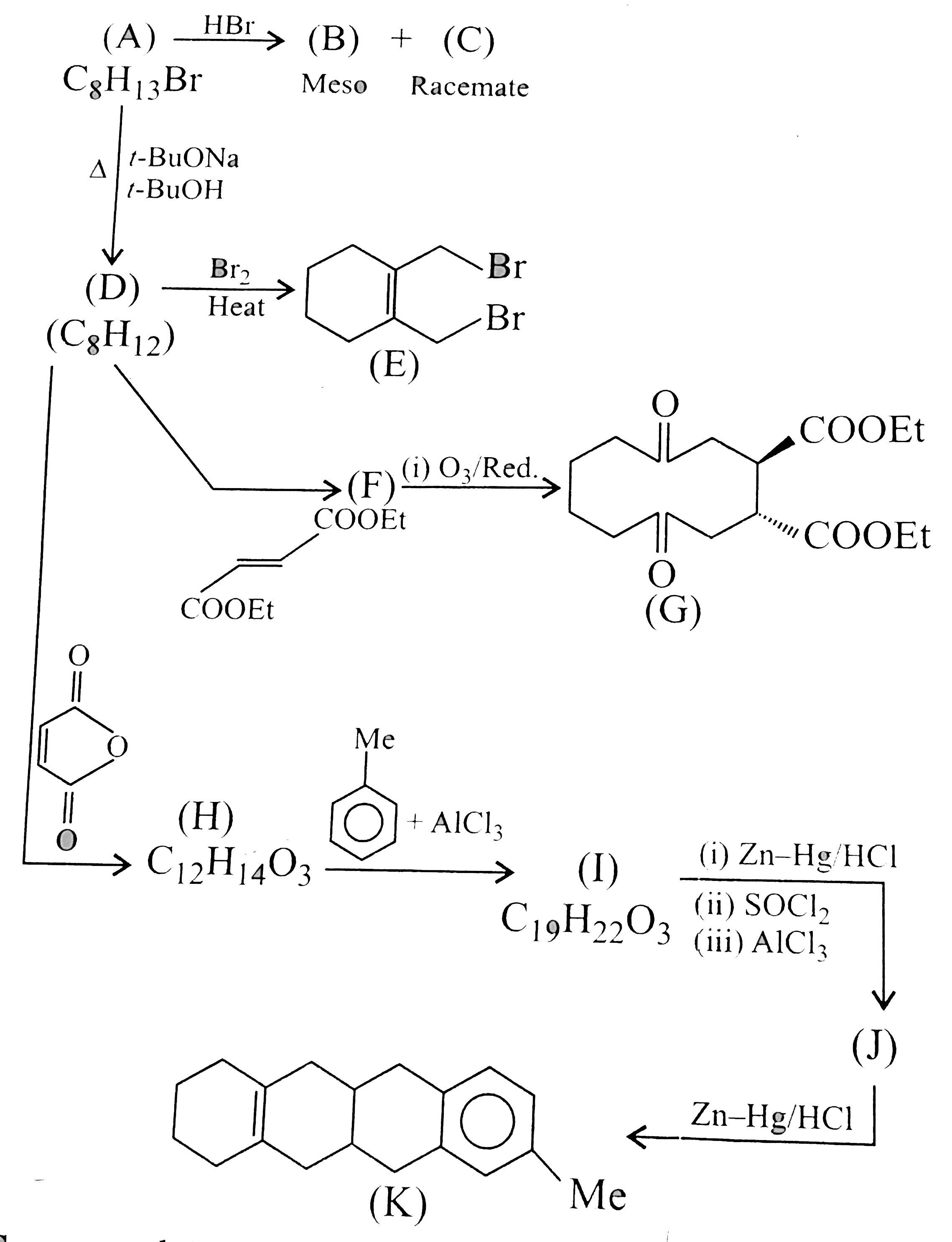
Compound `(A)` is:16:52View SolutionThis section contains `11` pragraphs, Based on each paragraph, four to nine mutilple choice questions have to be answered. Each question has four mutiple chaoices questions have to be answered. Each question has four mutiple choices `(a), (b),(c)` and `(d)` out of which only one is correct or wrong.
Paragraph for Problems `1-8`
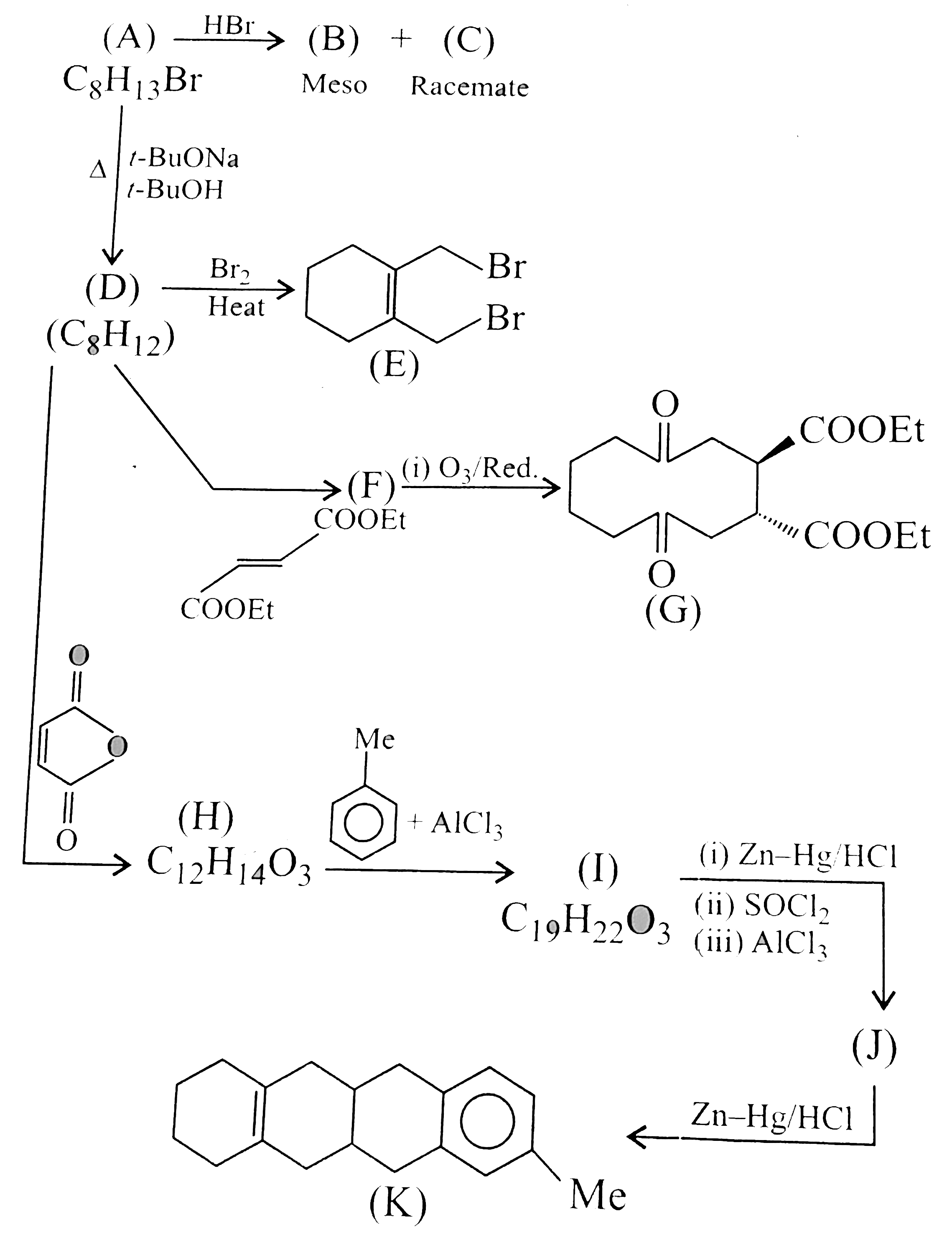
Compound `(B)` is:16:52View SolutionThis section contains `11` pragraphs, Based on each paragraph, four to nine mutilple choice questions have to be answered. Each question has four mutiple chaoices questions have to be answered. Each question has four mutiple choices `(a), (b),(c)` and `(d)` out of which only one is correct or wrong.
Paragraph for Problems `1-8`
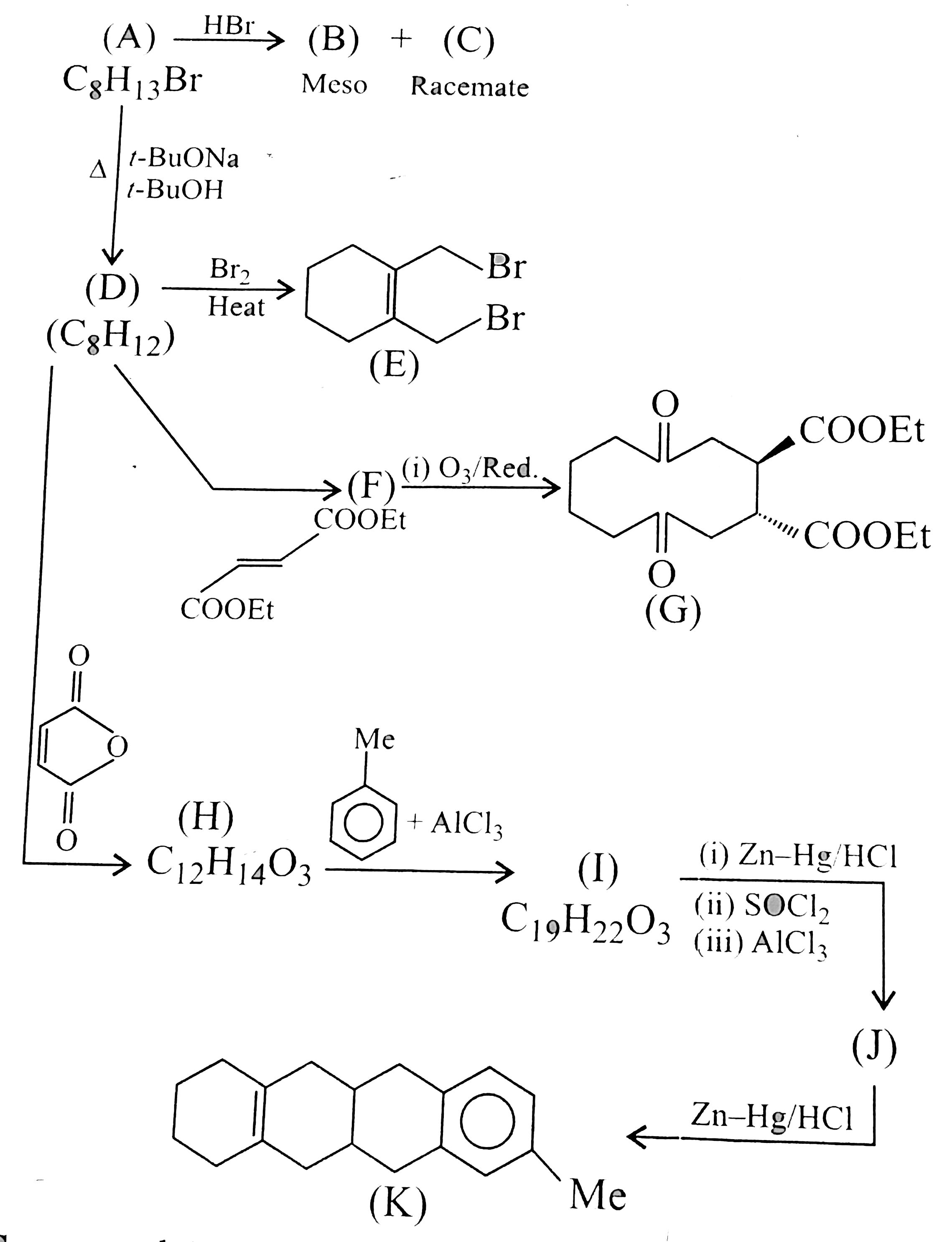
Compound `(C)` is:16:52View SolutionThis section contains `11` pragraphs, Based on each paragraph, four to nine mutilple choice questions have to be answered. Each question has four mutiple chaoices questions have to be answered. Each question has four mutiple choices `(a), (b),(c)` and `(d)` out of which only one is correct or wrong.
Paragraph for Problems `1-8`
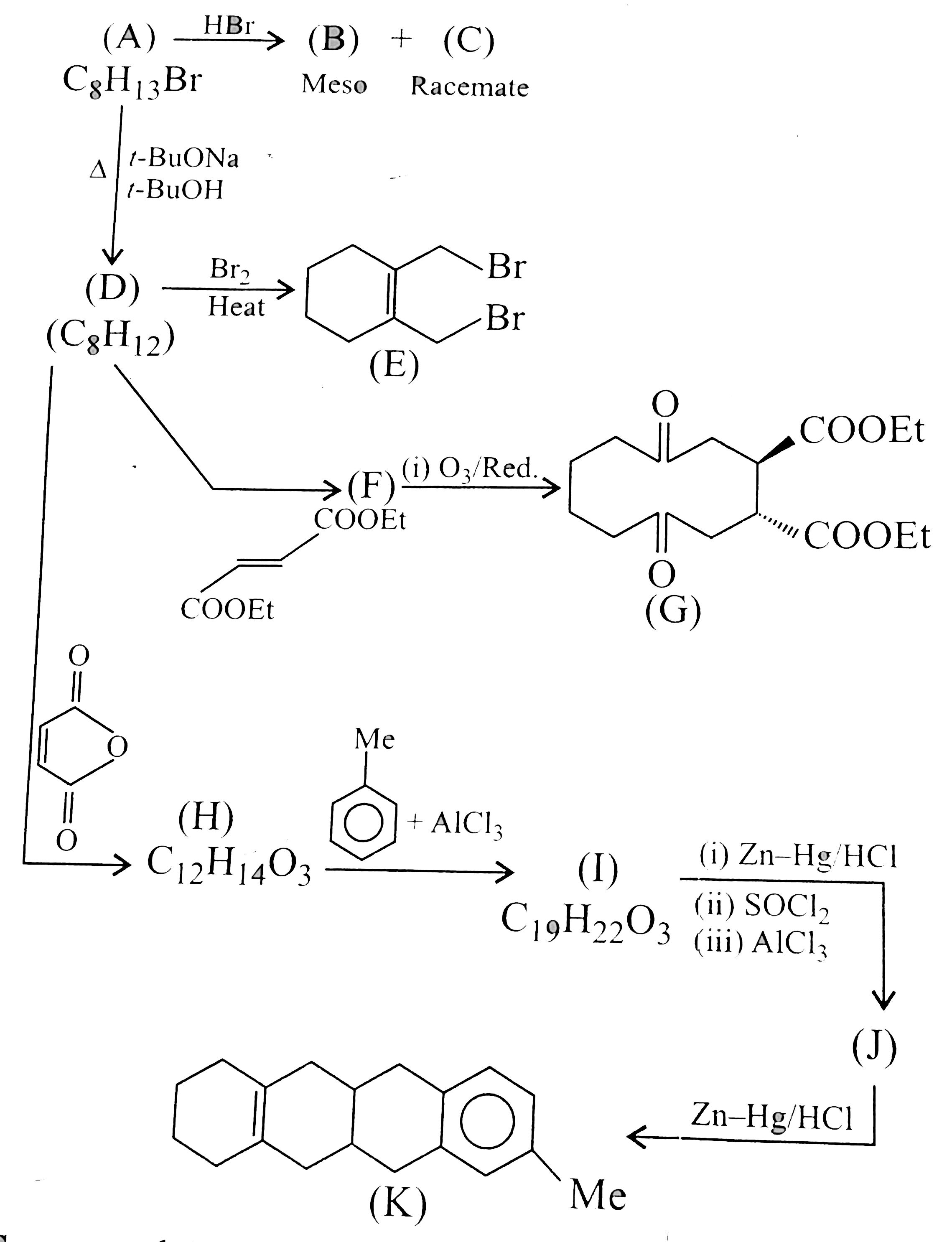
Compound `(D)` is:16:52View SolutionThis section contains `11` pragraphs, Based on each paragraph, four to nine mutilple choice questions have to be answered. Each question has four mutiple chaoices questions have to be answered. Each question has four mutiple choices `(a), (b),(c)` and `(d)` out of which only one is correct or wrong.
Paragraph for Problems `1-8`
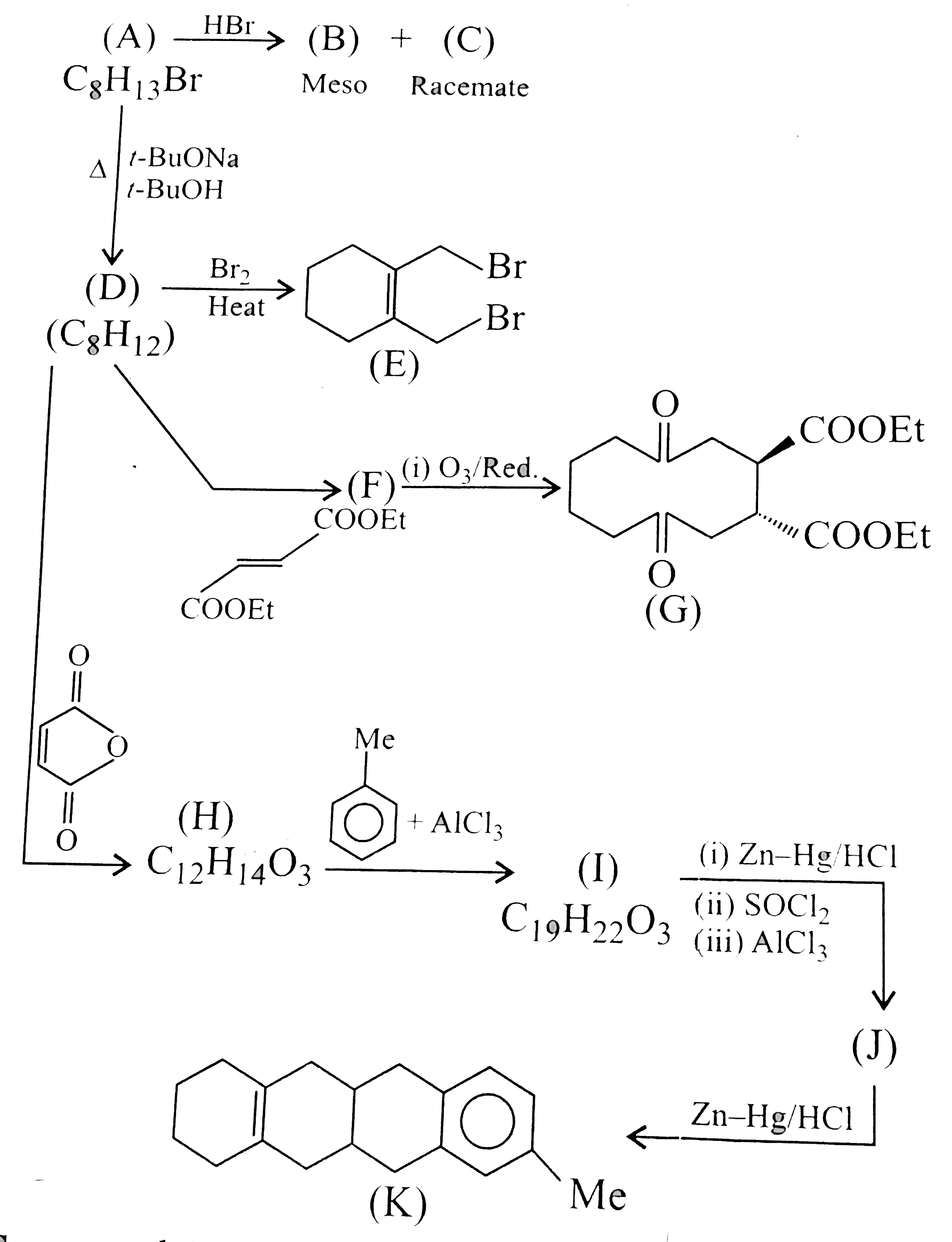
Compound `(F)` is:16:52View SolutionThis section contains `11` pragraphs, Based on each paragraph, four to nine mutilple choice questions have to be answered. Each question has four mutiple chaoices questions have to be answered. Each question has four mutiple choices `(a), (b),(c)` and `(d)` out of which only one is correct or wrong.
Paragraph for Problems `1-8`
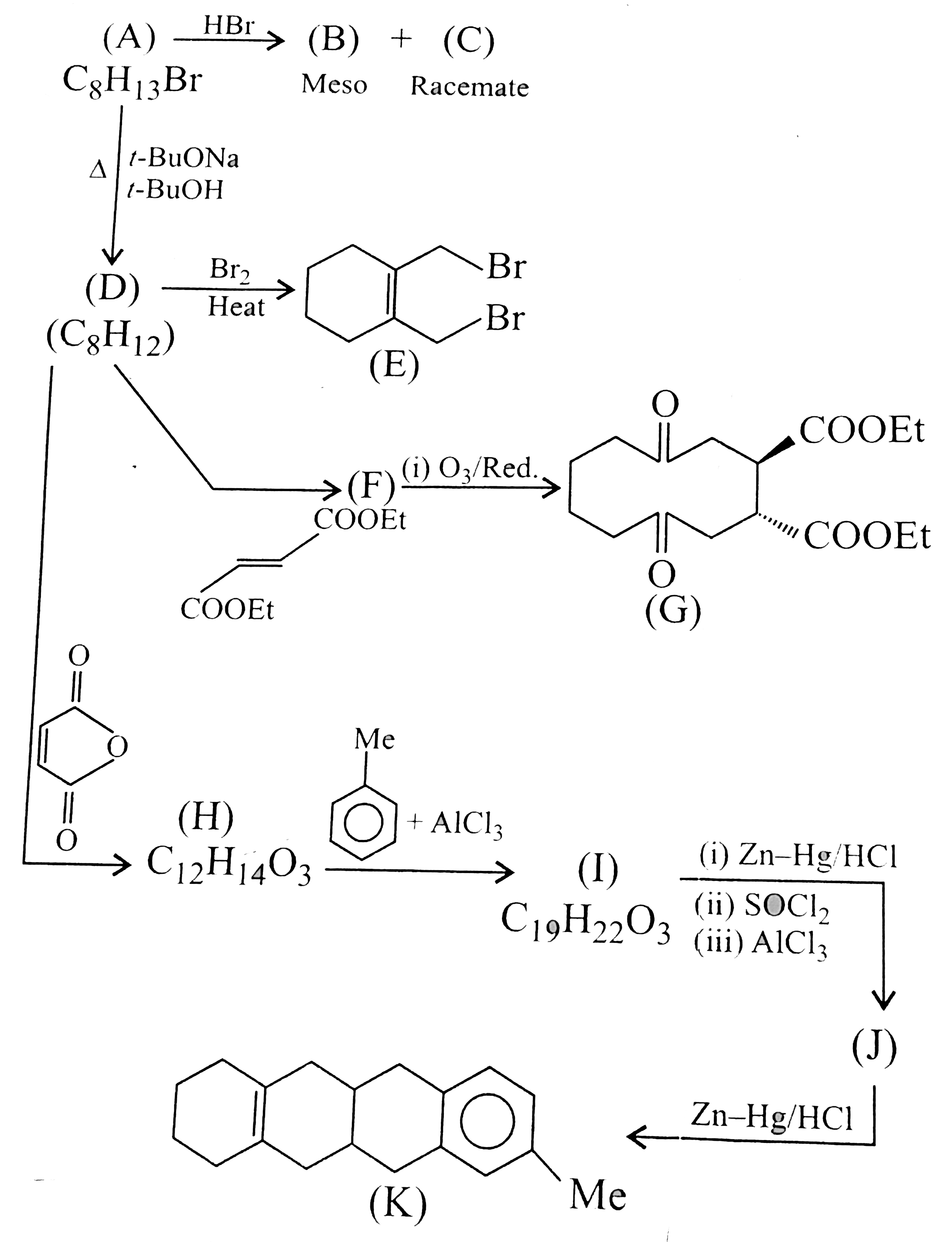
Compound `(H)` is:16:52View SolutionThis section contains `11` pragraphs, Based on each paragraph, four to nine mutilple choice questions have to be answered. Each question has four mutiple chaoices questions have to be answered. Each question has four mutiple choices `(a), (b),(c)` and `(d)` out of which only one is correct or wrong.
Paragraph for Problems `1-8`
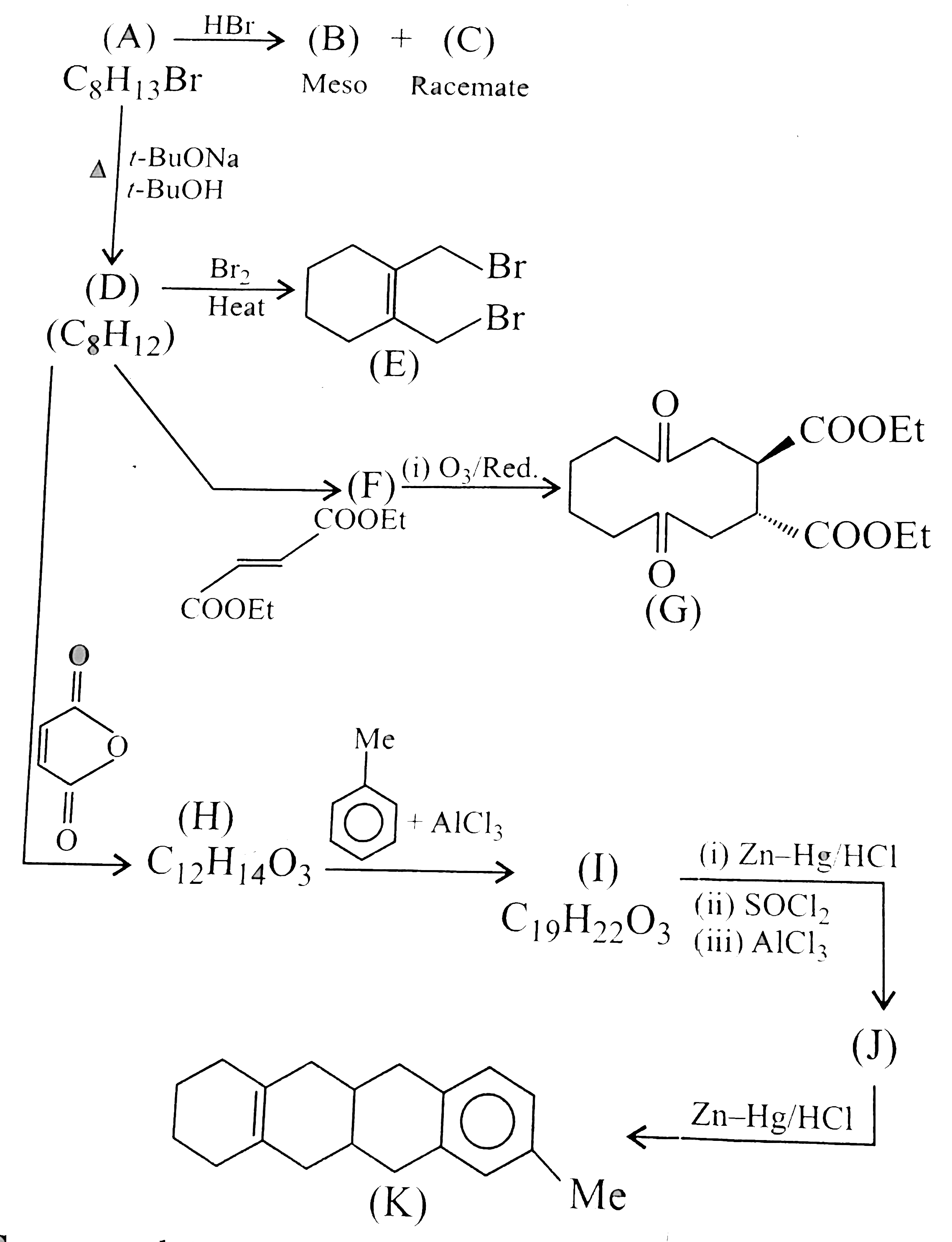
Compound `(I)` is:16:52View SolutionThis section contains `11` pragraphs, Based on each paragraph, four to nine mutilple choice questions have to be answered. Each question has four mutiple chaoices questions have to be answered. Each question has four mutiple choices `(a), (b),(c)` and `(d)` out of which only one is correct or wrong.
Paragraph for Problems `1-8`
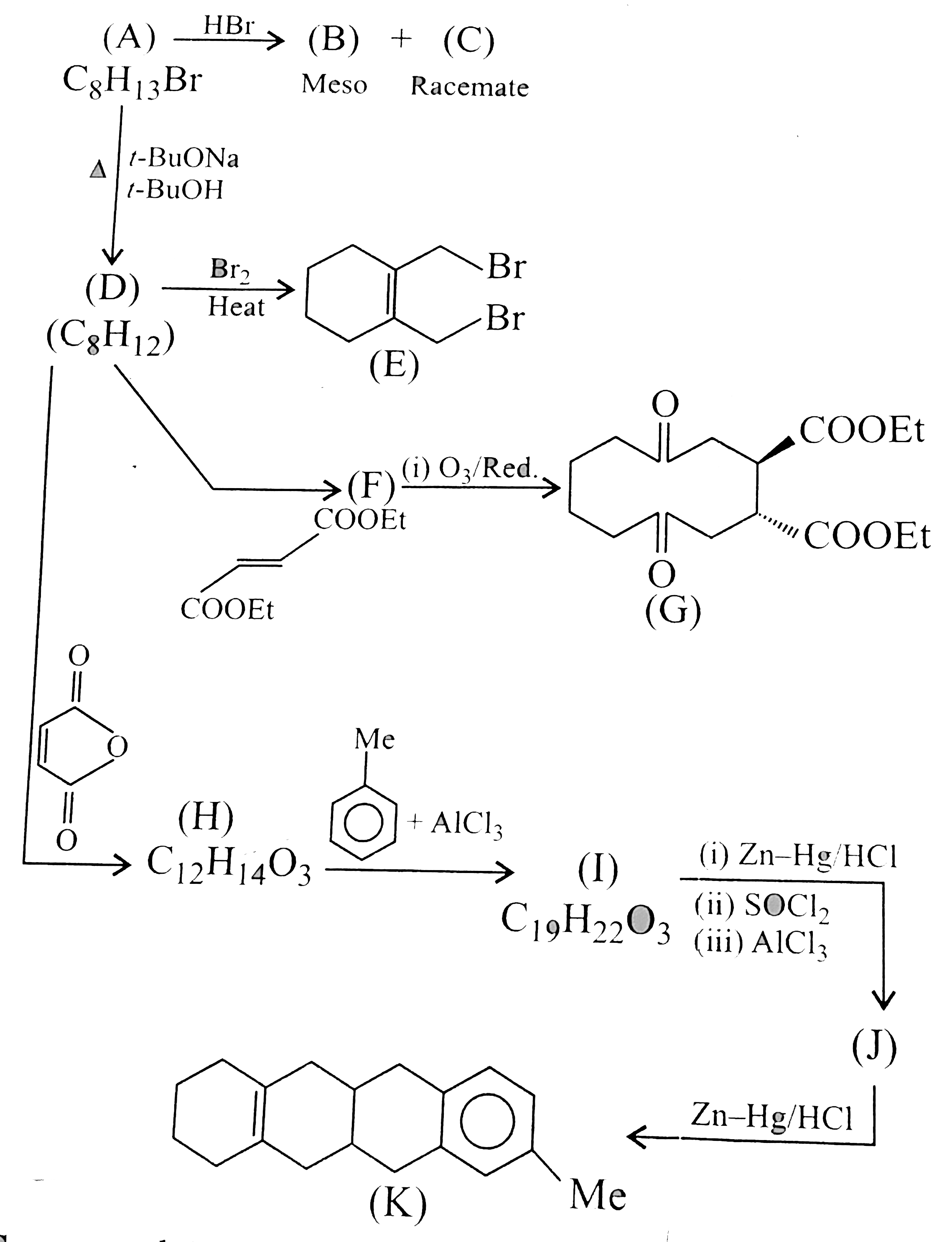
Compound `(J)` is:16:52View SolutionParagraph for problems `9-15`
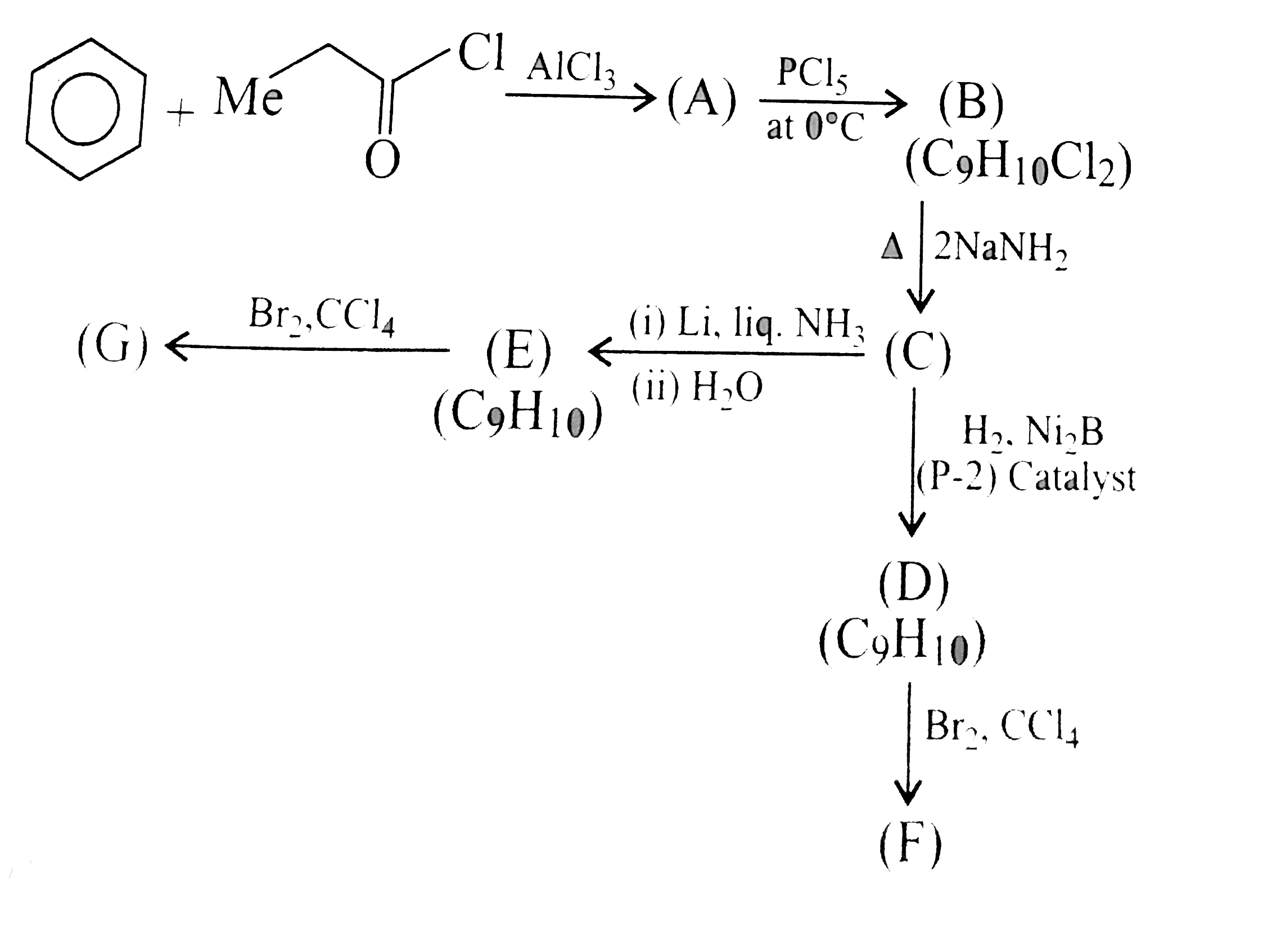
Compound `(A)` on reaction with `NH_(2) NH_(2) + overset(o-)(O)H` is:12:29View SolutionParagraph for problems `9-15`
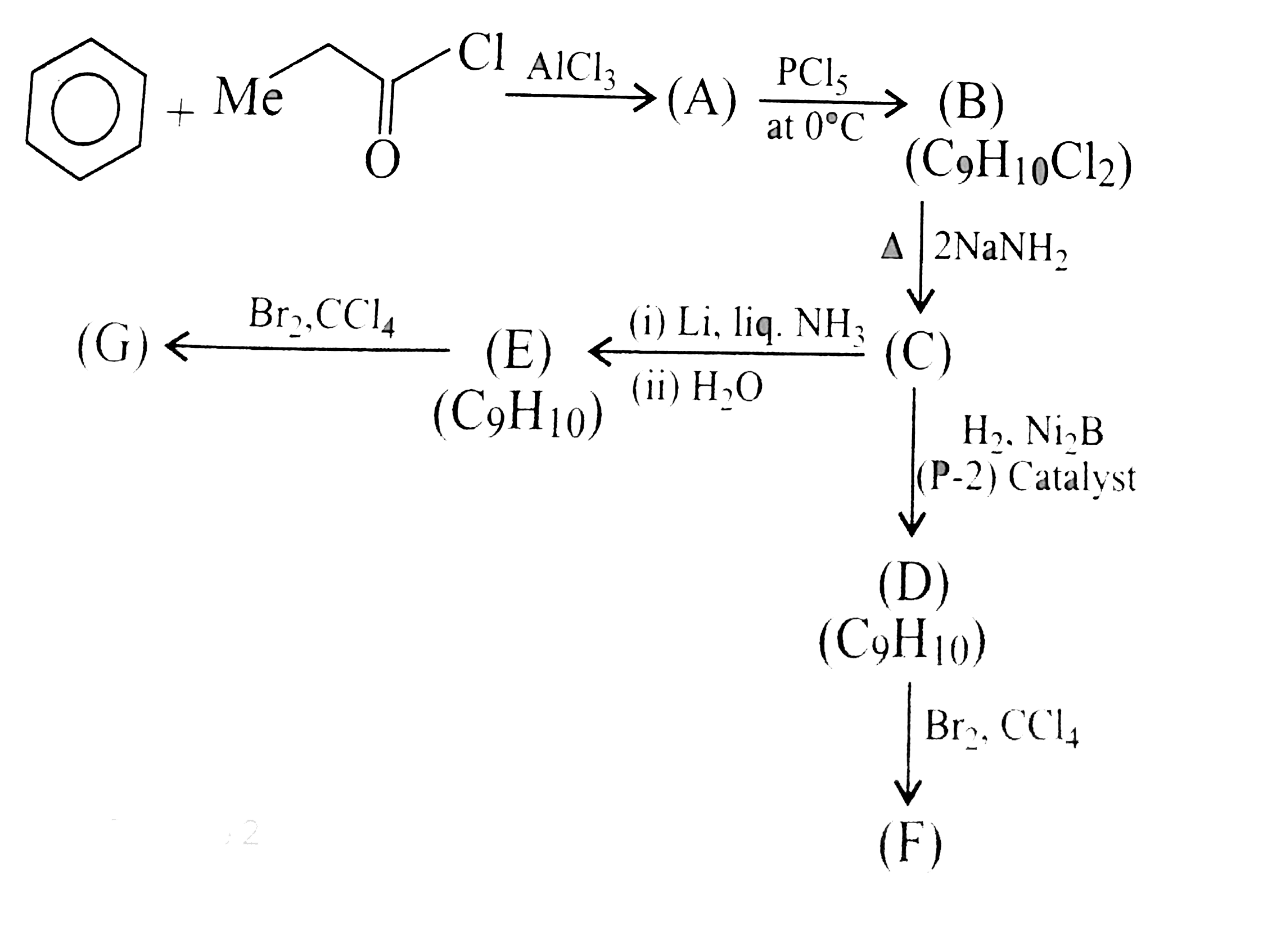
Compound `(B)` is:12:29View SolutionParagraph for problems `9-15`
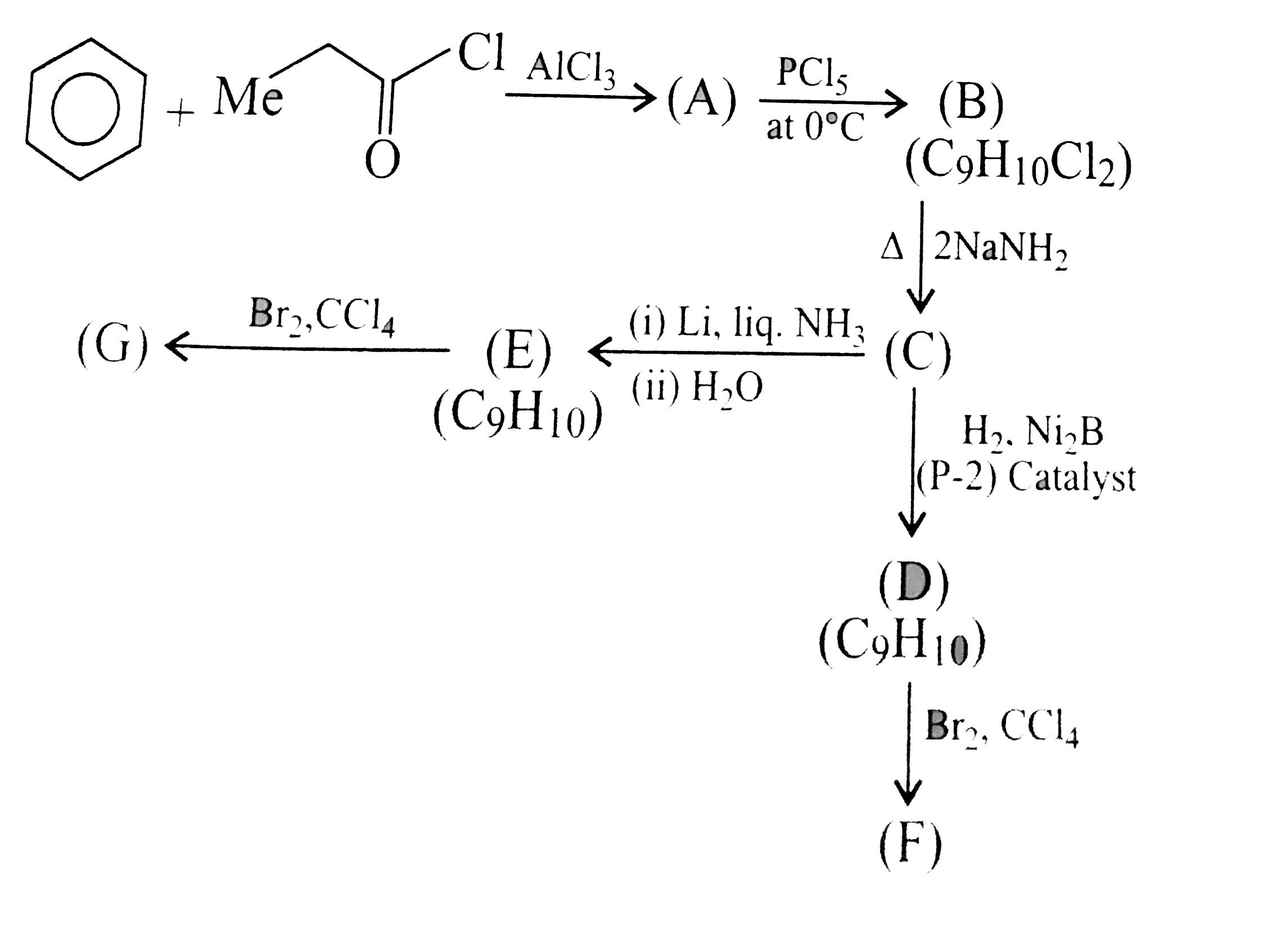
Compound `(C)` is:12:29View SolutionParagraph for problems `9-15`
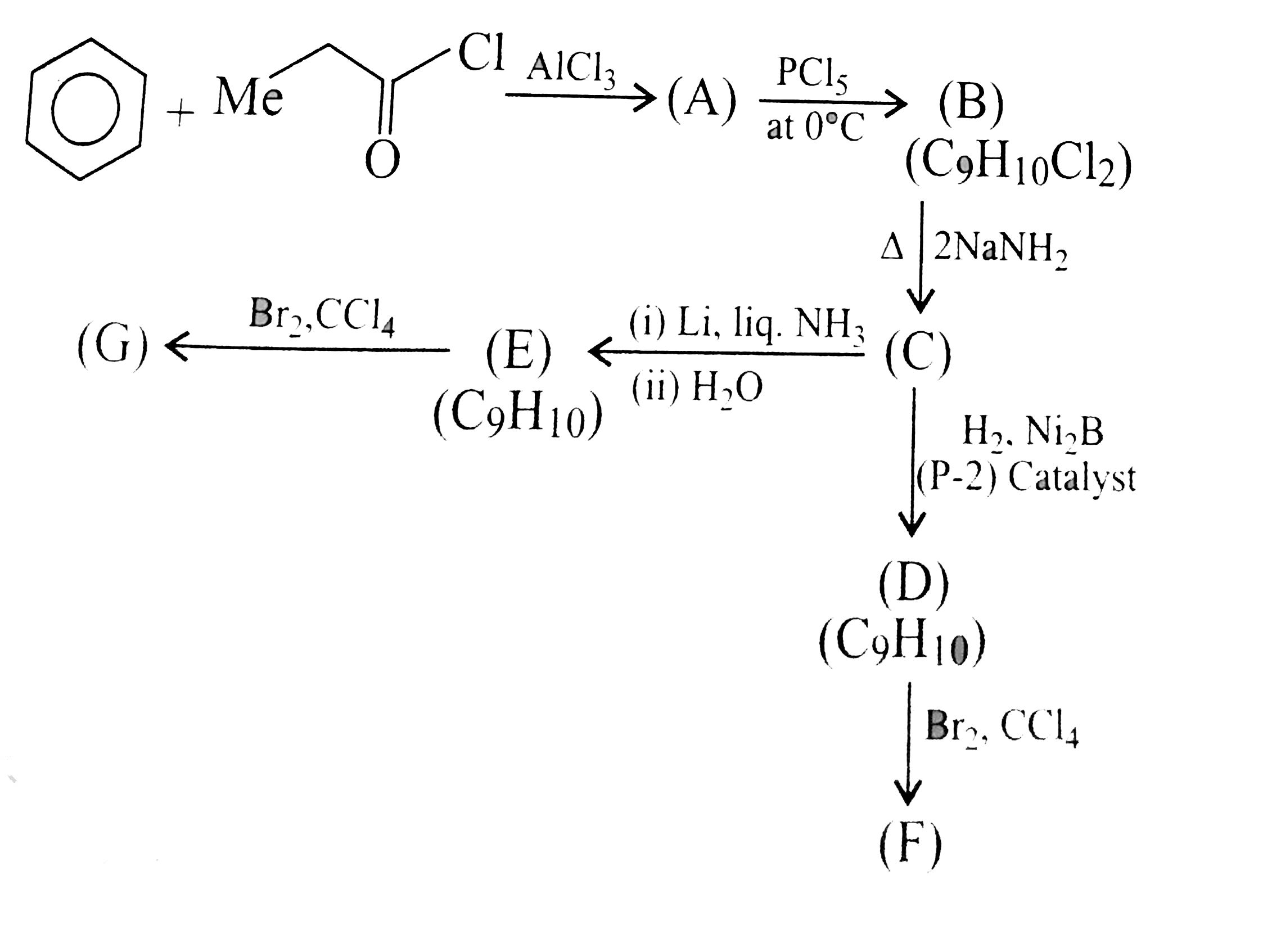
Compound `(D)` is:12:29View SolutionParagraph for problems `9-15`

Compound `(E)` is:12:29View SolutionParagraph for problems `9-15`

Compound `(F)` is:12:29View SolutionParagraph for problems `9-15`
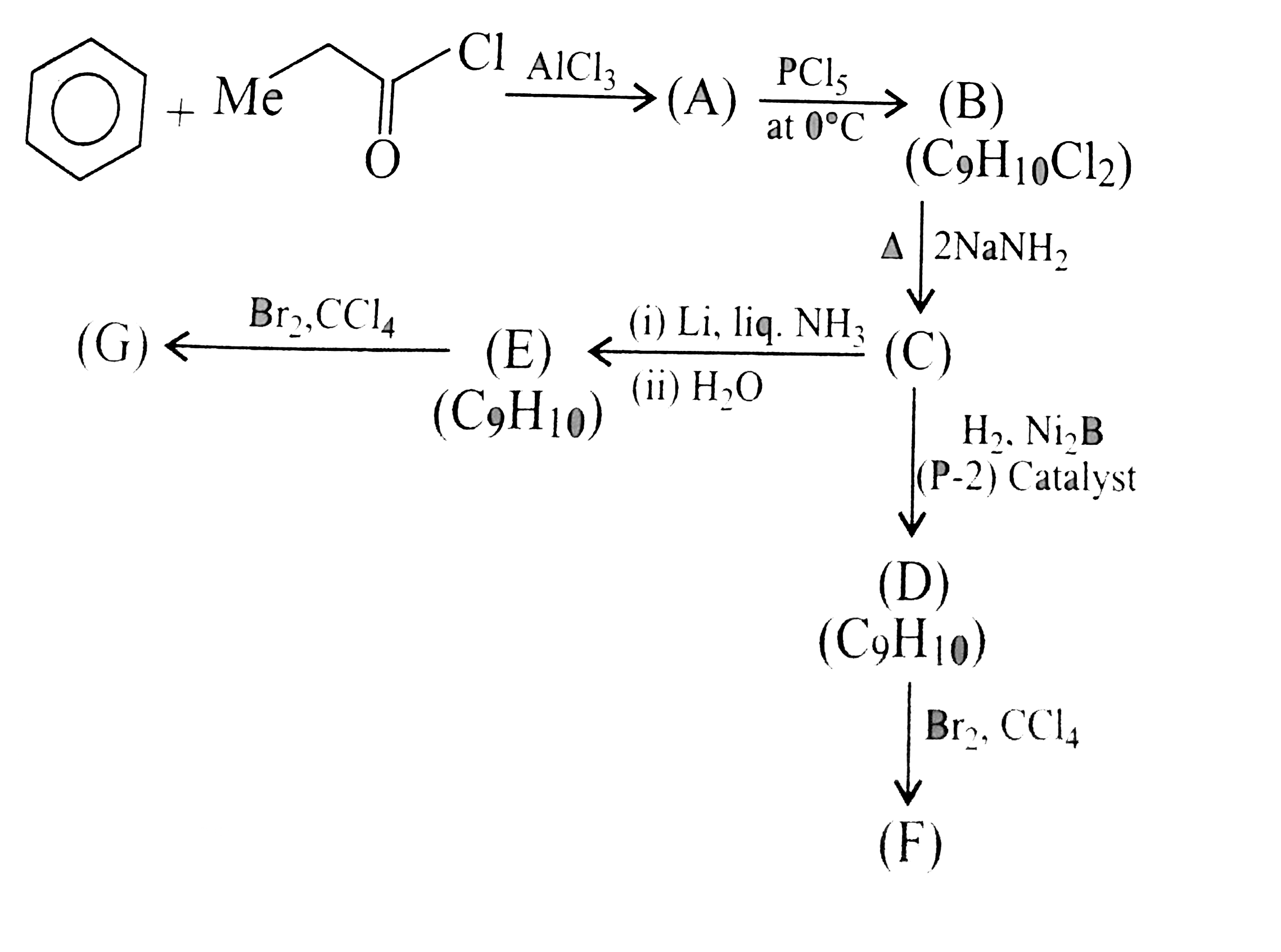
Compound `(G)` is:12:29View Solution
All the reactions `i)` to `(v)` are examples of:14:24View Solution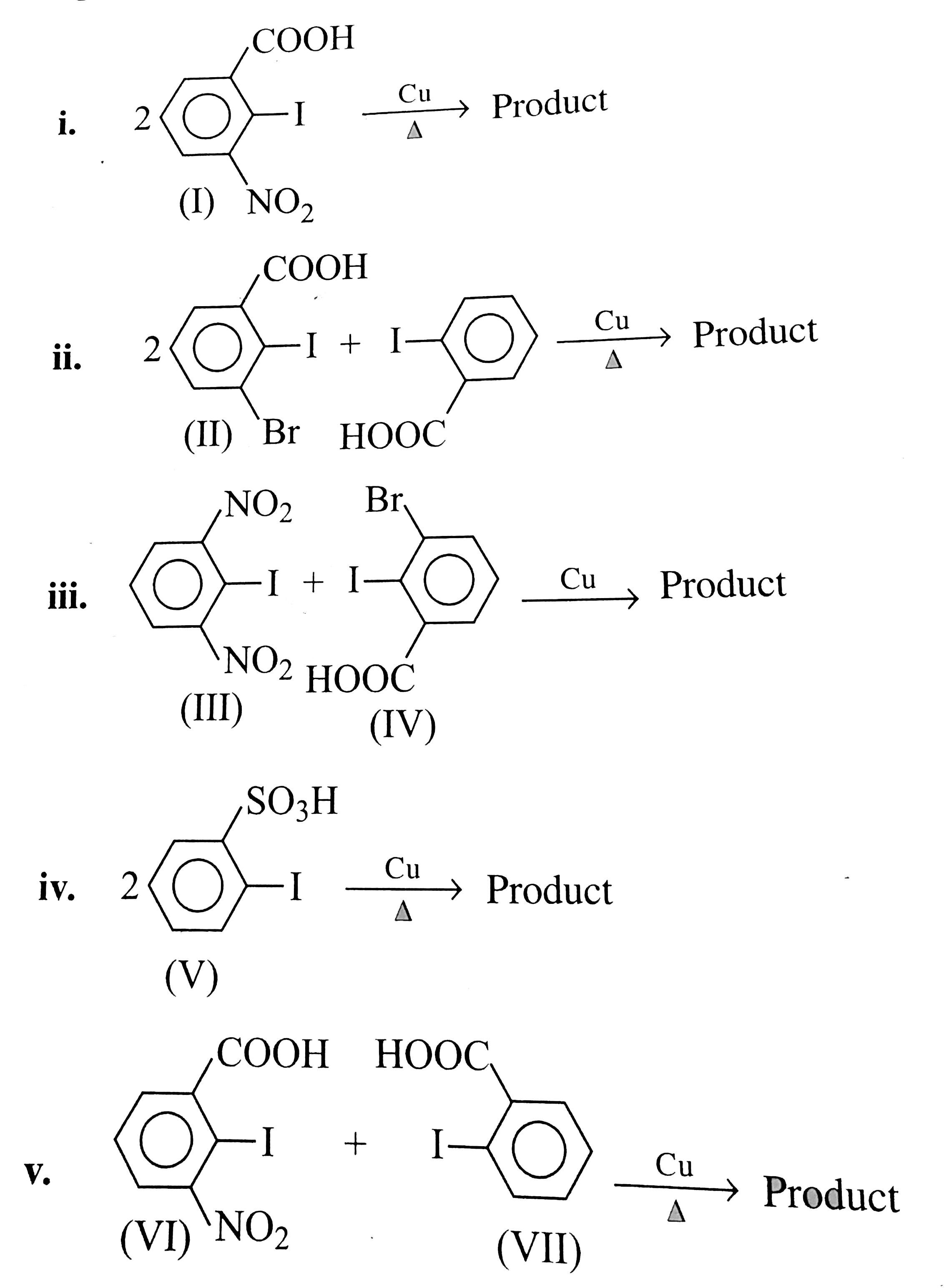
The compound`(s)` in the reaction `(i)` is/are:14:24View Solution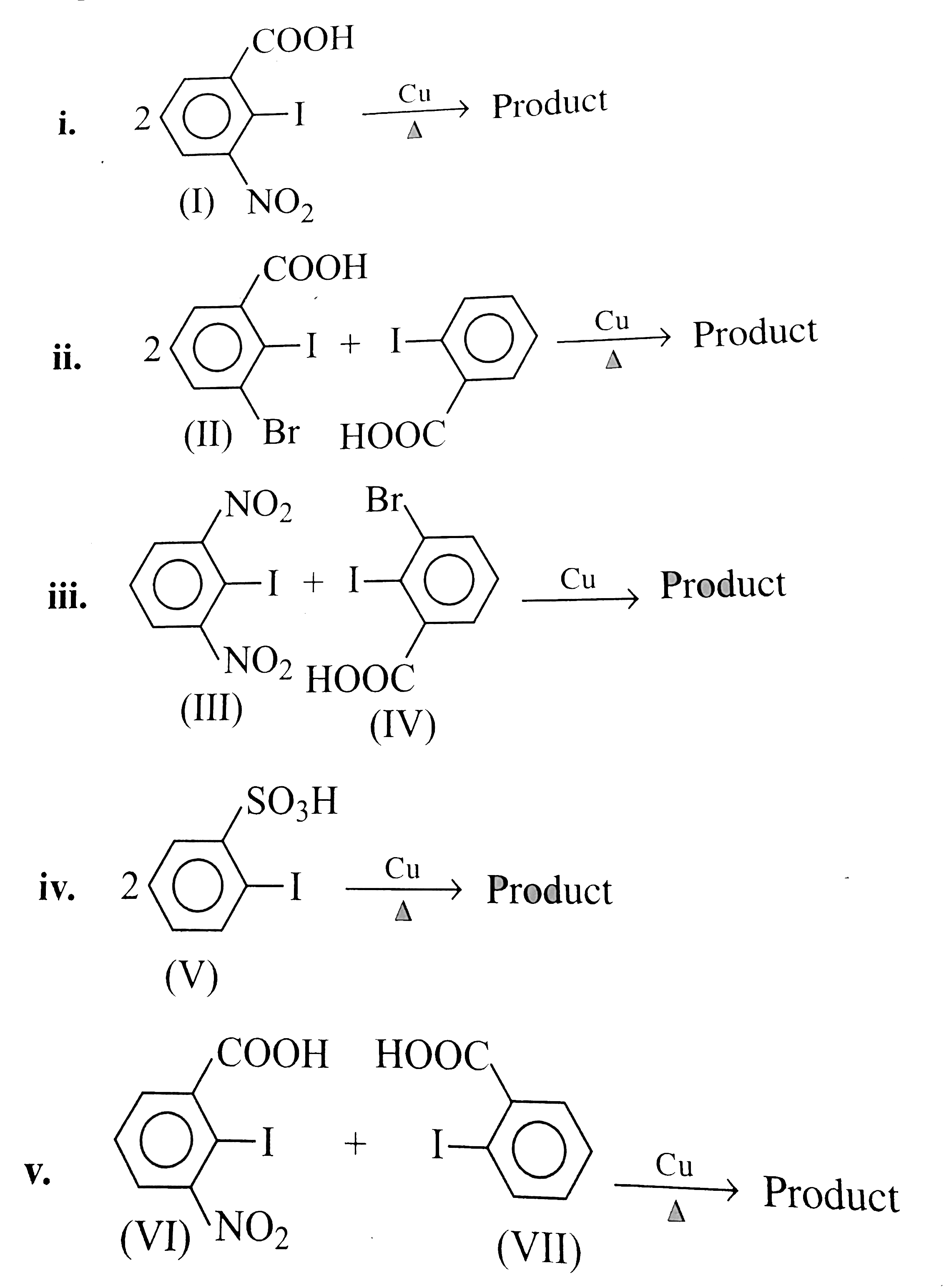
The compound`(s)` in the reaction `(ii)` is/are:14:24View Solution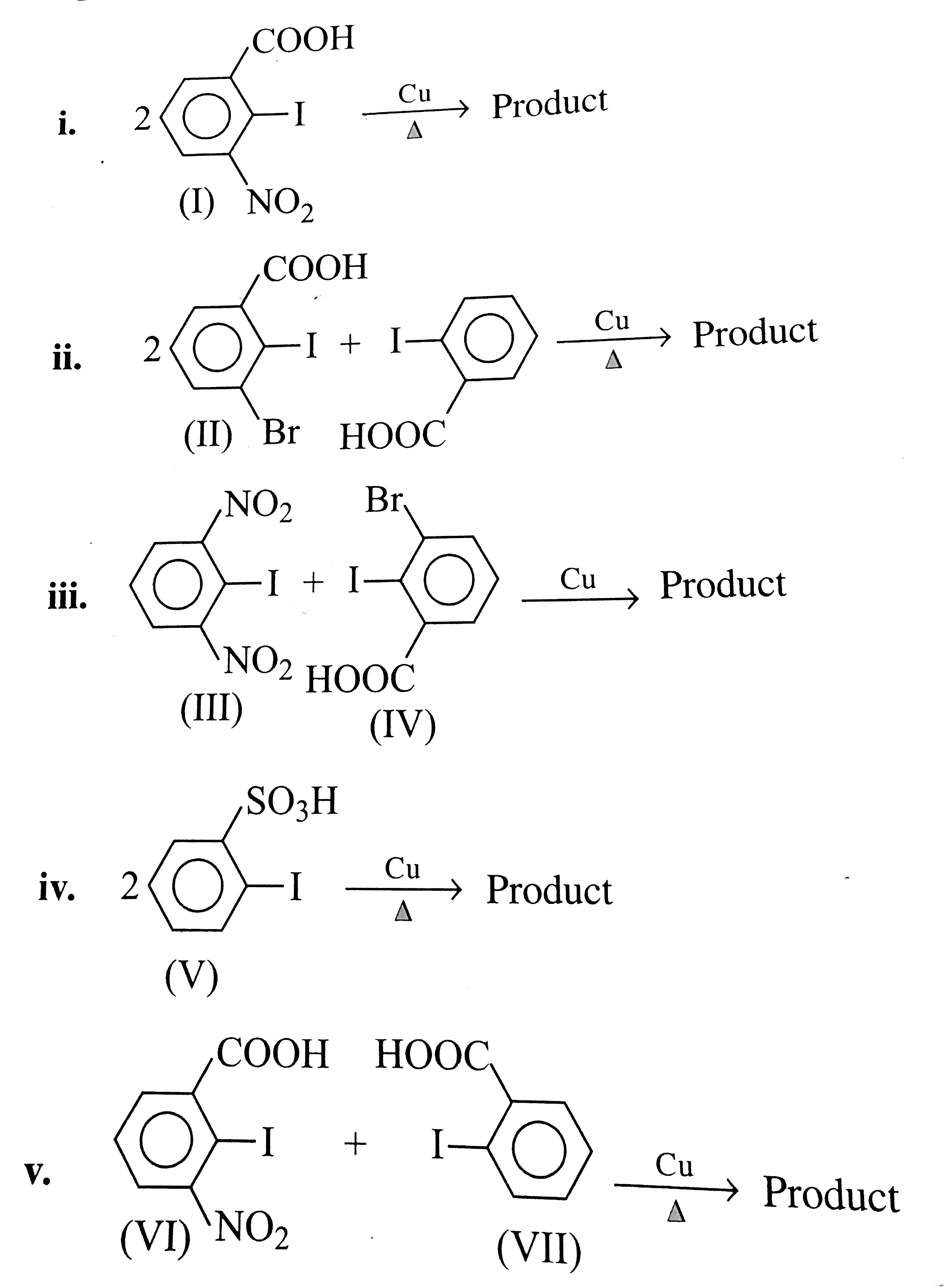
The compound`(s)` in the reaction `(iii)` is/are:14:24View Solution
The compound`(s)` in the reaction `(iv)` is/are:14:24View Solution
The compound`(s)` in the reaction `(v)` is/are:14:24View SolutionCompound `(A)`, an alkene with molecule formula `(C_(5)H_(10))` exists in various strictures. On mononcholorination and dichlorination, it again shows various structures and streoisomers.
View SolutionCompound `(A)`, an alkene with molecule formula `(C_(5)H_(10))` exists in various strictures. On mononcholorination and dichlorination, it again shows various structures and streoisomers.
One of the cyclic isomers of `(A)` on monochlorination gives one product. The isomer `(I)` is:View SolutionCompound `(A)`, an alkene with molecule formula `(C_(5)H_(10))` exists in various strictures. On mononcholorination and dichlorination, it again shows various structures and streoisomers.
Another isomer `(II)` on monochlorination gives two products. The isomer `(II)` is:View SolutionCompound `(A)`, an alkene with molecule formula `(C_(5)H_(10))` exists in various strictures. On mononcholorination and dichlorination, it again shows various structures and streoisomers.
Isomer `(III)` on monochlorination gives three products. The isomer `(III)` is:View SolutionCompound `(A)`, an alkene with molecule formula `(C_(5)H_(10))` exists in various strictures. On mononcholorination and dichlorination, it again shows various structures and streoisomers.
Two isomers `(IV)` and `(V)` on monochlorination give four products. The isomers `(IV)` and `(V)` are:View SolutionCompound `(A)`, an alkene with molecule formula `(C_(5)H_(10))` exists in various strictures. On mononcholorination and dichlorination, it again shows various structures and streoisomers.
Which isomer of `(A)` shows styereoisomerism ?View SolutionCompound `(A)`, an alkene with molecule formula `(C_(5)H_(10))` exists in various strictures. On mononcholorination and dichlorination, it again shows various structures and streoisomers.
The total number of stereoisomerism shown by isomer in Q.No 26 is:View Solution
Compound `(B)` is:11:02View Solution
Compound `(D)` is:11:02View Solution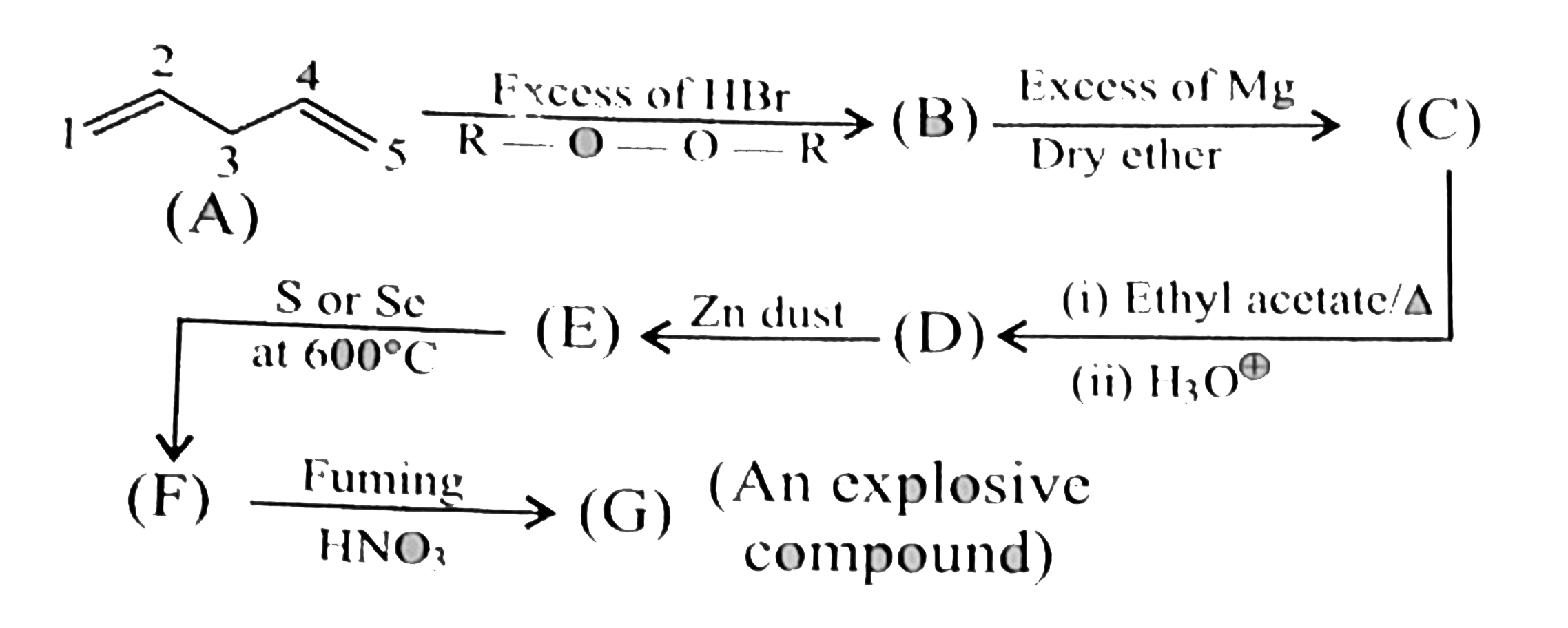
Compound `(E)` is:11:02View Solution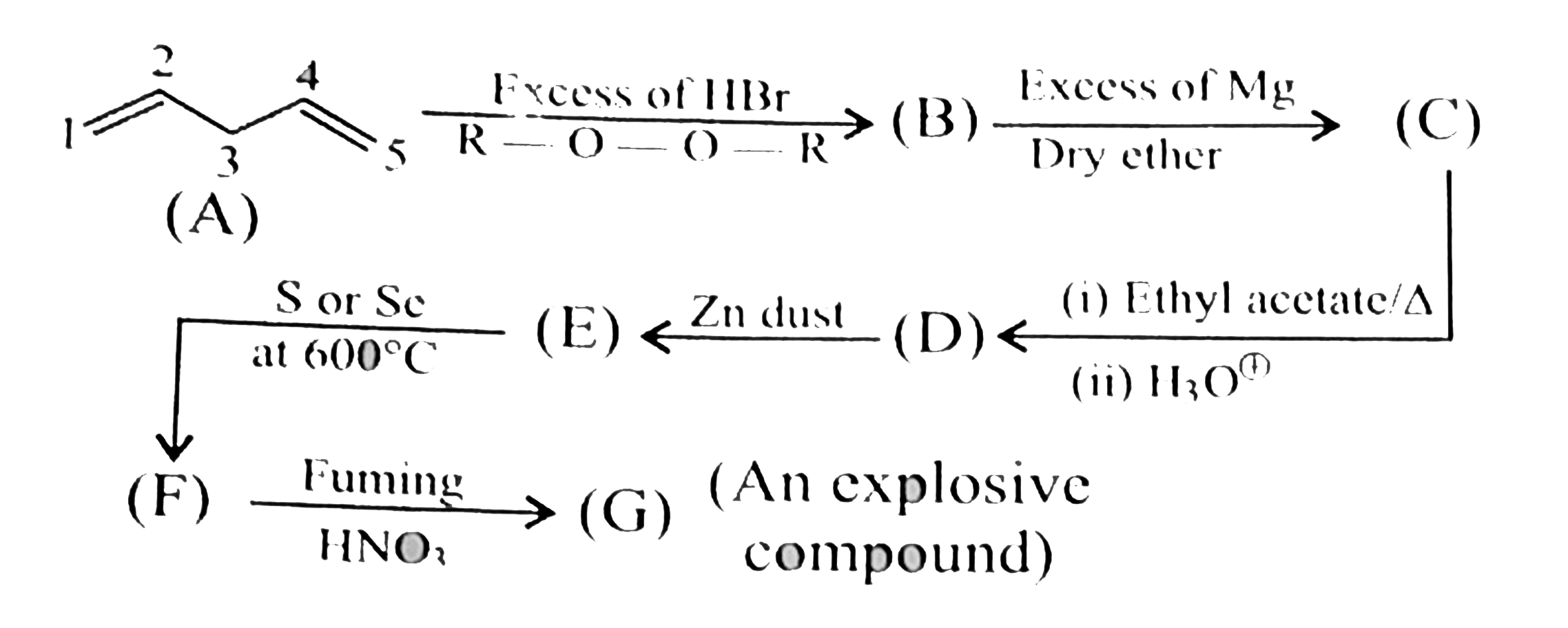
Compound `(F)` is:11:02View Solution
Compound `(G)` is:11:02View SolutionA hydrocation `(A) (C_(8) H_(10)) (E)` is a stream volatile compound and on nitration gives two mononitro derivatives. `(A)` gives the following reactions.
The name of `(H)` is:View SolutionA hydrocation `(A) (C_(8) H_(10)) (E)` is a stream volatile compound and on nitration gives two mononitro derivatives. `(A)` gives the following reactions.
Degree fo unsaturation `(DU)` in `(H)` is:View Solution
Compound `(B)` is:12:52View Solution
Compound `(C)` is:12:52View Solution
Compound `(D)` is:12:52View Solution
In the conversion of `(C)` to `(E) , (E)` is `Bu - NH_(2)`. This reaction is called:12:52View Solution
Compound `(G)` is:12:52View Solution
Compound `(H)` is:12:52View Solution
The compounds `(I)` and `(J)` are respectively:12:52View Solution
Which statement is wrong about the hydrolysis of `R - overset(o+)(N) -= overser(o-)(C)` ?12:52View Solution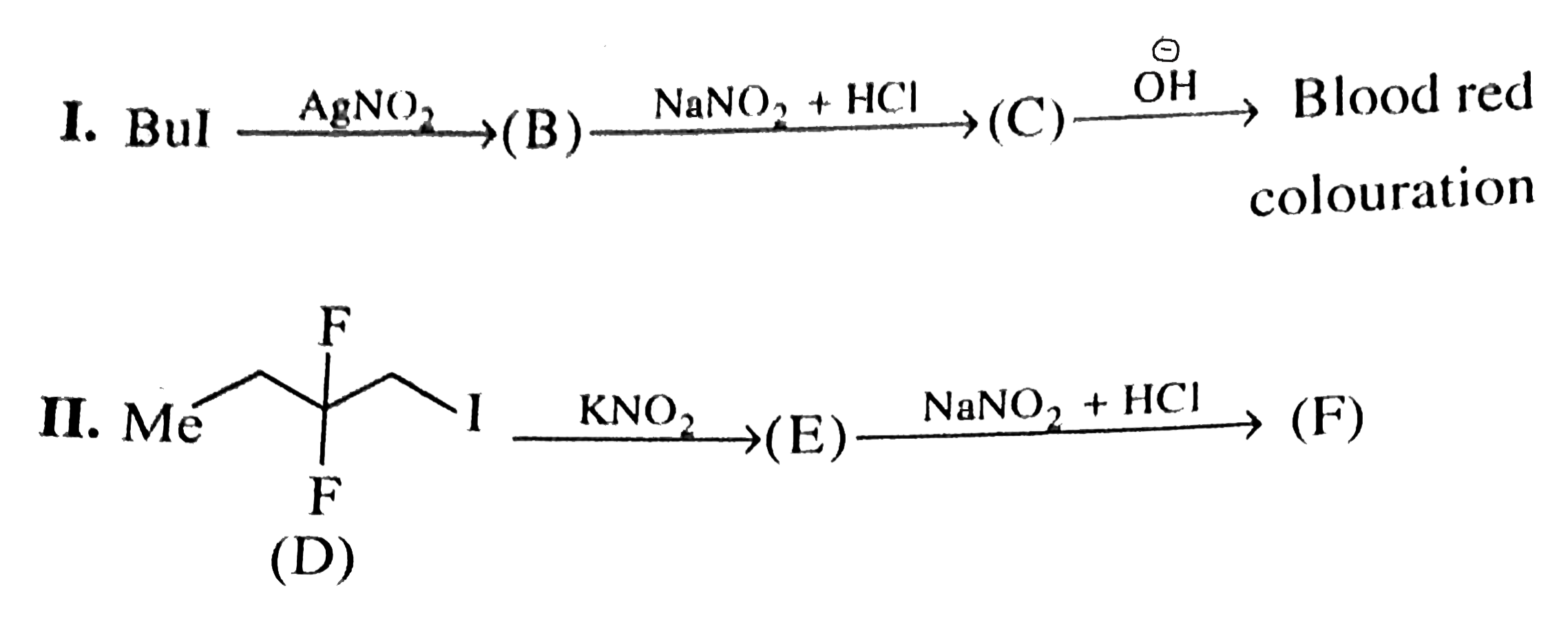
Compound `(B)` is:08:24View Solution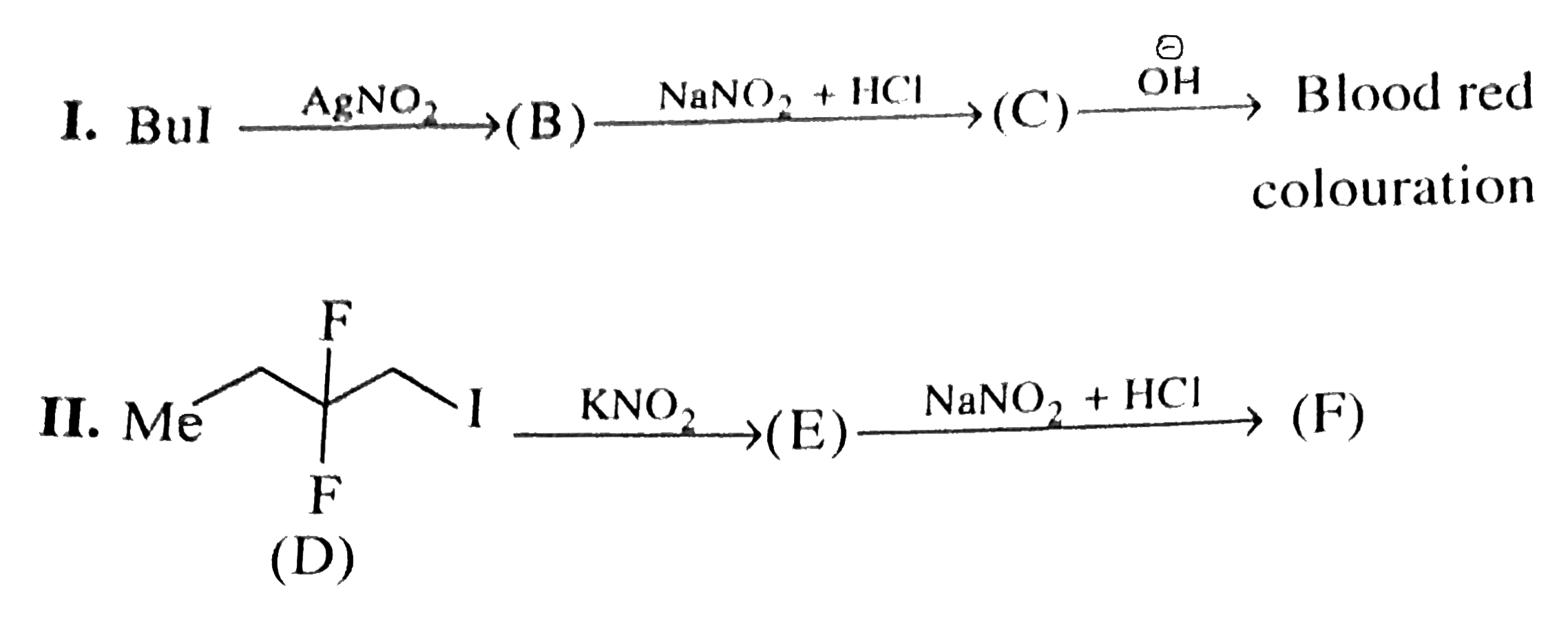
Compound `(C)` is:08:24View Solution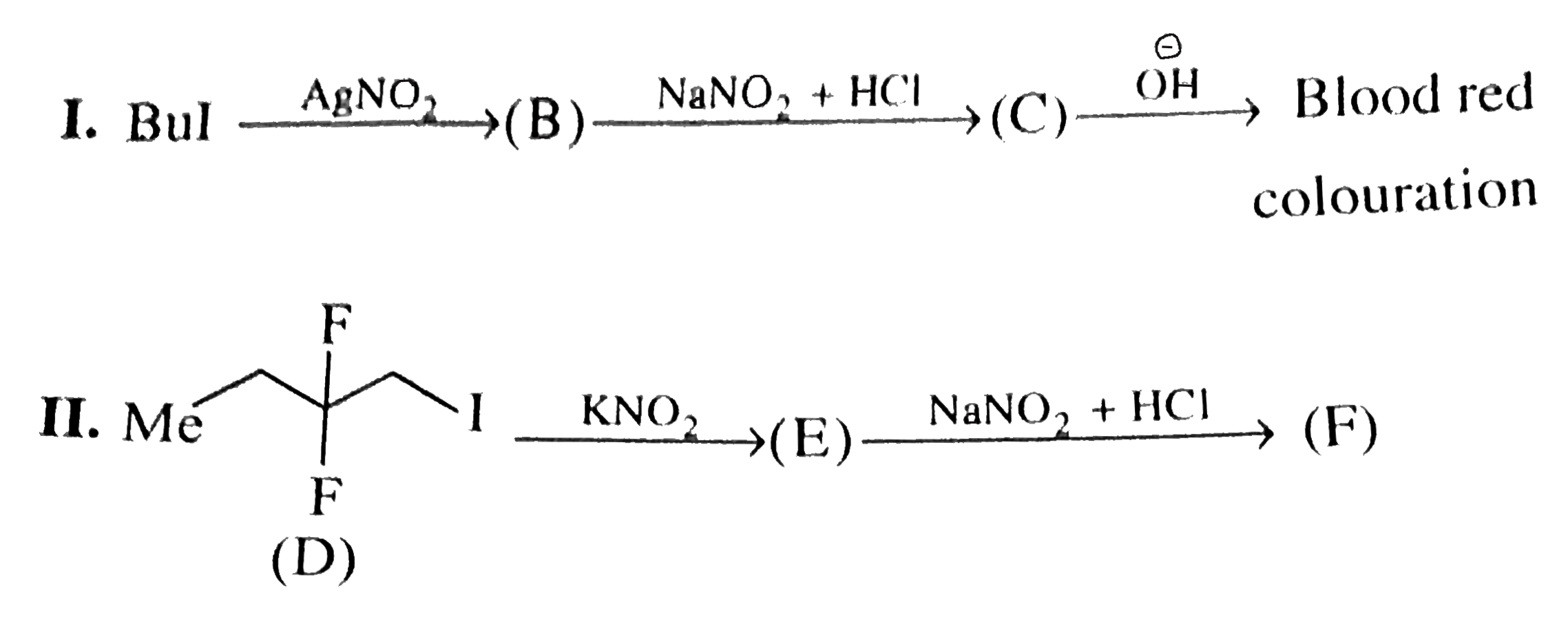
Compound `(E)` is:08:24View Solution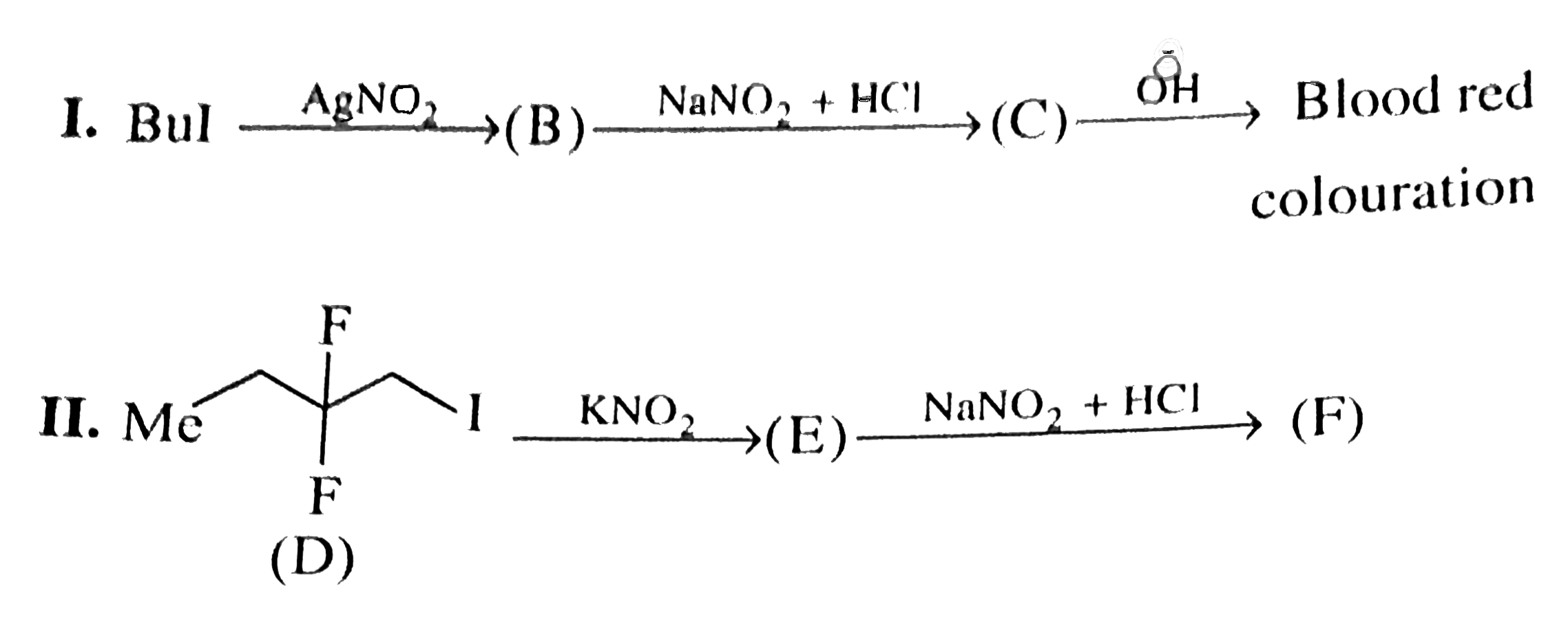
Compound `(F)` is:08:24View Solution`SN` reaction is given by these compounds, which have a nuclophilic group and a good leaving `EWG`. It should be stable after leaving with bonding pair of `overline(e)'s` and it should have high polarisability.
Nucliphilic aliphatic substituion reaction is mainly of two types `SN^(-1)` and `SN^(2). SN^(-1)` mechanism is a two step process. Reaction velocity of `SN^(-1)` depends only on the concentration of the subtrate. It proceeds via the formation of carbocation, optically active substrate gives `(o+)` and `(o-)` froms of the product.
In most of the cases, the product usually consists of `5-20%` inverted and `(95-80%)` racemised species. The more stable is the carbocation, the greater is the propotion of racemission. In solvolysis reaction, the more nucleophillic is the solvent, the greater is the proportion of inversion.
Which of the following will give `SN` reaction?View Solution`SN` reaction is given by these compounds, which have a nuclophilic group and a good leaving `EWG`. It should be stable after leaving with bonding pair of `overline(e)'s` and it should have high polarisability.
Nucliphilic aliphatic substituion reaction is mainly of two types `SN^(-1)` and `SN^(2). SN^(-1)` mechanism is a two step process. Reaction velocity of `SN^(-1)` depends only on the concentration of the subtrate. It proceeds via the formation of carbocation, optically active substrate gives `(o+)` and `(o-)` froms of the product.
In most of the cases, the product usually consists of `5-20%` inverted and `(95-80%)` racemised species. The more stable is the carbocation, the greater is the propotion of racemission. In solvolysis reaction, the more nucleophillic is the solvent, the greater is the proportion of inversion.
Fugacity power of which group will be maximum?View Solution`SN` reaction is given by these compounds, which have a nuclophilic group and a good leaving `EWG`. It should be stable after leaving with bonding pair of `overline(e)'s` and it should have high polarisability.
Nucliphilic aliphatic substituion reaction is mainly of two types `SN^(-1)` and `SN^(2). SN^(-1)` mechanism is a two step process. Reaction velocity of `SN^(-1)` depends only on the concentration of the subtrate. It proceeds via the formation of carbocation, optically active substrate gives `(o+)` and `(o-)` froms of the product.
In most of the cases, the product usually consists of `5-20%` inverted and `(95-80%)` racemised species. The more stable is the carbocation, the greater is the propotion of racemission. In solvolysis reaction, the more nucleophillic is the solvent, the greater is the proportion of inversion.
Which of the following gives `SN^(1)` reaction?View Solution`SN^(2)` reaction is a bimolecular reaction which takes places by the formation of `T.S.` Veolcity of the reaction depends on the concentration of the substrate as well as the nucleophile.
The reaction is favoureed by strong `Nu^(o-)` and in the presence of polar aprotic sovlent, optically active halides give. Walken inversion by `SN^(2)` mechanism. The presence of hero group (atom) at `beta-C` atom, unsaturation at `beta-C` and `(-overset(O)overset(||)(C)-)` group at `alpha-C` atomn favor `SN^(2)` mechanism.
Allyl halides and benzyl halides give `SN^(1)` and `SN^(2)` reactions. Allyl halides alos give `SN^(2)` mechanism `EDG` at ortho- and para- postions in benzyl halides favors `SN^(1)` mechanism, wheras `EWG` favors `SN^(2)` mechanism.
Which of the following will give `SN^(2)` mechanism?View Solution`SN^(2)` reaction is a bimolecular reaction which takes places by the formation of `T.S.` Veolcity of the reaction depends on the concentration of the substrate as well as the nucleophile.
The reaction is favoureed by strong `Nu^(o-)` and in the presence of polar aprotic sovlent, optically active halides give. Walken inversion by `SN^(2)` mechanism. The presence of hero group (atom) at `beta-C` atom, unsaturation at `beta-C` and `(-overset(O)overset(||)(C)-)` group at `alpha-C` atomn favor `SN^(2)` mechanism.
Allyl halides and benzyl halides give `SN^(1)` and `SN^(2)` reactions. Allyl halides alos give `SN^(2)` mechanism `EDG` at ortho- and para- postions in benzyl halides favors `SN^(1)` mechanism, wheras `EWG` favors `SN^(2)` mechanism.
Which of the following will give Walden inversion ?View Solution`SN^(2)` reaction is a bimolecular reaction which takes places by the formation of `T.S.` Veolcity of the reaction depends on the concentration of the substrate as well as the nucleophile.
The reaction is favoureed by strong `Nu^(o-)` and in the presence of polar aprotic sovlent, optically active halides give. Walken inversion by `SN^(2)` mechanism. The presence of hero group (atom) at `beta-C` atom, unsaturation at `beta-C` and `(-overset(O)overset(||)(C)-)` group at `alpha-C` atomn favor `SN^(2)` mechanism.
Allyl halides and benzyl halides give `SN^(1)` and `SN^(2)` reactions. Allyl halides alos give `SN^(2)` mechanism `EDG` at ortho- and para- postions in benzyl halides favors `SN^(1)` mechanism, wheras `EWG` favors `SN^(2)` mechanism.
Which of the following will gives `SN^(2)` mechanism gtView Solution`SN^(2)` reaction is a bimolecular reaction which takes places by the formation of `T.S.` Veolcity of the reaction depends on the concentration of the substrate as well as the nucleophile.
The reaction is favoureed by strong `Nu^(o-)` and in the presence of polar aprotic sovlent, optically active halides give. Walken inversion by `SN^(2)` mechanism. The presence of hero group (atom) at `beta-C` atom, unsaturation at `beta-C` and `(-overset(O)overset(||)(C)-)` group at `alpha-C` atomn favor `SN^(2)` mechanism.
Allyl halides and benzyl halides give `SN^(1)` and `SN^(2)` reactions. Allyl halides alos give `SN^(2)` mechanism `EDG` at ortho- and para- postions in benzyl halides favors `SN^(1)` mechanism, wheras `EWG` favors `SN^(2)` mechanism.
Which of the following will give `SN^(1)` reaction?View SolutionIsoprophI bromide was treated separately with sodium ethoxide under two different conditions.
Reaction I:
Treatment of isopropyI bromide with `(Me_(3)CONa)` at `40^(@)C` gave almost exclusively compound `(A) (C_(3)H_(6))`.
Reaction II:
Treatment of `(i-PrBr)` with `NaOC_(2)H_(5)` at `30^(@)C` yileled compound `(A) (C_(3)H_(6))` along with a small amount of an ether `(B) (C_(5)H_(12)O)`.
Compound `(A)` was readily oxidised by a neutral solution of cold dil. `KMnO_(4)` to give a brown preciptate.
The formations of `(A)` and `(B)` are best explained by:14:43View SolutionIsoprophI bromide was treated separately with sodium ethoxide under two different conditions.
Reaction I:
Treatment of isopropyI bromide with `(Me_(3)CONa)` at `40^(@)C` gave almost exclusively compound `(A) (C_(3)H_(6))`.
Reaction II:
Treatment of `(i-PrBr)` with `NaOC_(2)H_(5)` at `30^(@)C` yileled compound `(A) (C_(3)H_(6))` along with a small amount of an ether `(B) (C_(5)H_(12)O)`.
Compound `(A)` was readily oxidised by a neutral solution of cold dil. `KMnO_(4)` to give a brown preciptate.
Which of the following most accureately repreasents the activated complex formed in reaction `(II)` that leads to compound `(A)` ?14:43View SolutionIsoprophI bromide was treated separately with sodium ethoxide under two different conditions.
Reaction I:
Treatment of isopropyI bromide with `(Me_(3)CONa)` at `40^(@)C` gave almost exclusively compound `(A) (C_(3)H_(6))`.
Reaction II:
Treatment of `(i-PrBr)` with `NaOC_(2)H_(5)` at `30^(@)C` yileled compound `(A) (C_(3)H_(6))` along with a small amount of an ether `(B) (C_(5)H_(12)O)`.
Compound `(A)` was readily oxidised by a neutral solution of cold dil. `KMnO_(4)` to give a brown preciptate.
Referring to Q. No. 67 which of the following represents the intermediate `T.S` for the formation of compound `(B)` ?14:43View SolutionIsoprophI bromide was treated separately with sodium ethoxide under two different conditions.
Reaction I:
Treatment of isopropyI bromide with `(Me_(3)CONa)` at `40^(@)C` gave almost exclusively compound `(A) (C_(3)H_(6))`.
Reaction II:
Treatment of `(i-PrBr)` with `NaOC_(2)H_(5)` at `30^(@)C` yileled compound `(A) (C_(3)H_(6))` along with a small amount of an ether `(B) (C_(5)H_(12)O)`.
Compound `(A)` was readily oxidised by a neutral solution of cold dil. `KMnO_(4)` to give a brown preciptate.
Which of the following is an accurate representations of compound `(B)` ?14:43View Solution
Exercises Linked Compreshension questions and complete solutions for chapter AROMATIC COMPOUNDS AND ALKYL AND ARYL HALIDES of CENGAGE CHEMISTRY (HINGLISH) of Class 12
All Exercises from CENGAGE CHEMISTRY Class 12 CHEMISTRY AROMATIC COMPOUNDS AND ALKYL AND ARYL HALIDES
- Archives Assertion-Resoning
- Archives Fill In Theblanks
- Archives Mutiple Correct
- Archives Mutiple Correct Answers Type
- Archives Single Correct
- Archives Single Correct Answer Type
- Archives Subjective
- Archives Subjective Type
- Exercises Assertion-Resoning
- Exercises Assertion-Resoning Type
- Exercises Concept Application
- Exercises Concept Application Type
- Exercises Linked Compreshension
- Exercises Linked Compreshension Type
- Exercises Multiple Correct
- Exercises Multiple Correct Answers Type
- Exercises Single Correct
- Exercises Single Correct Answer Type
- Exercises Subjective
- Exercises Subjective Type
- Illustration
- Solved Examples
- Solved Problems
